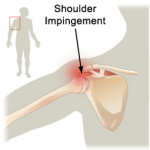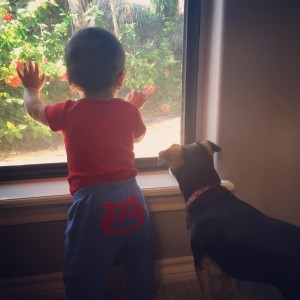Michael Baugh CDBC CPDT-KSA
None of us expects our dogs to bite. Even folks who have dogs who’ve bitten before are still sometimes surprised by their dog’s behavior. The reason is simple. Most dogs don’t bite, and those who do tend to do so infrequently and in very specific circumstances. We’ll get to that last part in a bit.
The best way to prevent bites from our own dogs is early intervention. No surprise there. Teaching young puppies important life skills and exposing them to the human world in thoughtful ways can prevent tons of problems, most notably aggression. Puppy classes for young pups (as young as 8 weeks) are an essential start.
 As your dog matures, the most important bite prevention skill humans should have is awareness. Notice your dog. Specifically, notice what frightens him or makes him uncomfortable. Fear fuels aggression. We can often prevent outbursts (and bites) by simply avoiding situations that scare our dogs. Otherwise, we can help our dogs around those situations. Ideally, we’ll help our dogs though the scary parts of life with some long-term training and behavior help.
As your dog matures, the most important bite prevention skill humans should have is awareness. Notice your dog. Specifically, notice what frightens him or makes him uncomfortable. Fear fuels aggression. We can often prevent outbursts (and bites) by simply avoiding situations that scare our dogs. Otherwise, we can help our dogs around those situations. Ideally, we’ll help our dogs though the scary parts of life with some long-term training and behavior help.
Fear is the most common cause of bites, but it’s not the only one. Dogs in pain often bite people (we could argue that that’s fear of escalated pain, but I digress). Dogs who covet or guard food, objects, locations, and sometimes people can also bite (fear of losing those things? – Okay I’ll stop). Even in these cases, our job as dog guardians is still awareness. Avoiding, Working Around, and Working Through still apply. Be your dog’s advocate and help diffuse situations that frighten him.
Avoidance. This one is sometimes controversial. We humans are stuck on the idea of mastering our dogs and making them do things. As a result we have trainers who intentionally expose dogs to things that frighten them so they can show the dog who’s boss. Nonsense. If there’s something that upsets your dog and you can easily avoid it, do so. Keep the dog in another room, behind a solid door, or on a leash – away from the people he’s most likely to bite. That’s prevention.
Work Around. Many dogs can tolerate frightening situations if the scary thing (person) isn’t too close or too active. For short-term bite prevention, moving your dog away from the scary thing is always helpful (leash). Calming the environment (including our own human behavior) is also very helpful. Humans who don’t move, who avoid looking at the dog, and who don’t speak to the dog are doing great work. We teach children to stand like a tree: hold their feet still like roots, wrap their arms around themselves like branches, look down, and remain silent. They’re diffusing the situation and preventing a possible bite.
Work Through. This is training for longer-term bite prevention. We can teach dogs to behave better (not biting) in three ways:
- Teaching Tasks – This involves teaching your dog how to respond to situations that used to result in conflict, fear, or anxiety. It’s obedience training. But, some of the tasks are specifically designed to help dogs relax (resist the impulse to lash out). Note: the only way to successfully teach frightened and potentially aggressive dogs is with positive reinforcement training. Using physical punishment or intimidation will likely increase aggressive behavior.
- Teaching Confidence – This is about teaching your dog that situations (and people) that were frightening or upsetting are actually not so bad. Because we train with reward-based methods, your dog learns that whenever a new situation presents itself that we humans become joyful, praising and generous with food. This is called “classical conditioning,” and it occurs even as you teach tasks.
- Teaching your dog to make good choices (self control) – Our dogs should never be forced to “handle” or “get used to” a situation that is frightening or upsetting (see “Avoidance” and “Work Around” above). We can expose our dogs to situations in a calm setting and at a safe distance. In this way we give our dog the option to make good behavior choices on his own. Because we’ve taught him useful tasks and helped him learn to be less frightened, we are setting him up to make appropriate choices. Trainers of wild and exotic animals have known about the importance of choice in training for a long while. An educated and experienced dog trainer can help you better understand and apply it as well.
During training many dogs learn to wear a muzzle. Muzzles prevent bites by keeping the dog’s teeth away from human flesh. The Muzzle Up Project on Facebook is a great resource for us humans to learn about the use and importance of muzzles.
If your dog has already bitten someone, or many people, please see a veterinary behaviorist or behavior consultant. You can prevent future bites. This blog is a start, but it’s not enough. You’ll need more help. Fortunately, that help is available.
Michael Baugh teaches dog training in Houston TX. He specializes in aggression and other behavior related to fear in dogs.



